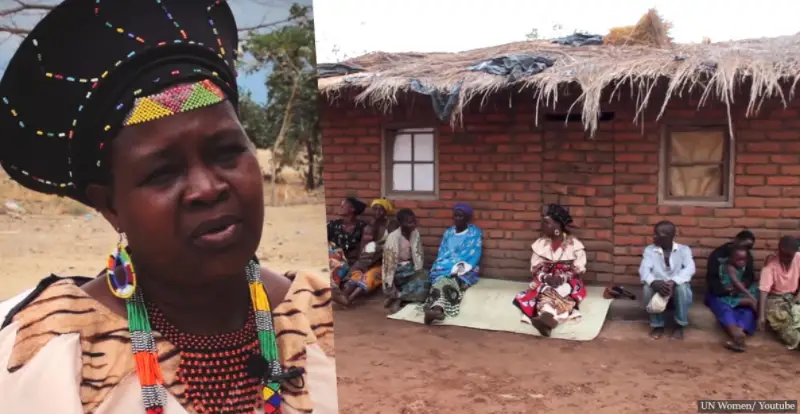The first thing that comes to mind when marriage is mentioned is family idyll, the man or woman we are in love with, children, family. We have heard of forced marriages in the past for some reason, unfortunately they still exist. One of the scariest things that can happen in this modern world is forced marriage. It is even more frightening when it happens to little girls.
Malawi is a place located in South Africa. Unfortunately, forced marriages still take place there and it happens to little girls. It is even more frightening that girls are forced to leave school to get married. According to UN statistics, more than half of girls in Malawi get married before the age of 18.
Teresa Kachindamoto is the head of one of Malawi’s largest districts. She advocates saving girls from forced marriages. So far, she has rescued more than 850 girls from forced marriage and sent them back to school to complete their education. Teresa says that the image of a 12-year-old girl holding her baby in her arms is something perverted, something that must never happen. She explains that unfortunately in Malawi every fifth girl is a victim of sexual violence. Asked why this happens, she said that poverty prevails in African countries, so that families are often forced to marry their daughters to save money, because for them it is one mouth less to feed, one meal less.
For girls who are forced to marry at an early age, this has consequences, such as domestic violence, sexual violence, abuse, exploitation, and even death. These children are denied the chance for education, and the health risks increase. After being forced to marry, the girls take care of their husband’s household, usually a much older man they have never seen before. These girls become pregnant, regardless of the fact that their body is not physically mature enough for that. This has fatal consequences for many girls. The existence of a direct link between early marriage, pregnancy and mortality has been proven through a study by a charity called Save the Children. They explain that girls after birth are overwhelmed with the role of mother, something for which they are neither physically nor mentally prepared. Girls are often under pressure, because the husband is reasonably older than them, so they do not have room to resist and oppose. This is a phenomenon that unfortunately is still happening in the Islamic world.
In order to reduce marriages with little girls, the UN Convention on the Rights of the Child advocates raising the age limit for marriage at the age of 18. This has happened in recent years in countries such as Chad, Zimbabwe, Guatemala, Ecuador and Chad. They have raised the age limit for marriage at the age of 18, and also exclude the possibility of special regulations for the possibility of marrying minors with the permission of a parent or judge.
According to most proponents, to prevent these marriages with minors, they say that this should become a trend in all countries of the world. Because it is a global problem, especially in Africa and southern Asia. The UN goal is that by 2030 there should be no more child marriages. Human rights organizations are calling for a more active engagement with politics on this issue. They emphasize that education is the most important thing for girls to be able to attend school. They explain that poor families are forced to marry their daughters because of the economic problems they face, so human rights organizations say that financial opportunities should be provided for parents or daughters, so that you can be employed later.

